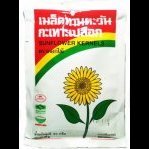Broken Tusk - How to Break the Body to Make a Higher Body
-
Most Recent Topics
-
Latest Comments
-
By Kevin von Duuglas-Ittu · Posted
There is a very strange thing happening. Waves of affluent tourism are being sent to what really is a Low Caste art and sport. Many do not realize that Thailand's society is still somewhat an operational, invisible caste system, itself formed from Siam's own, once widespread slavery and indentured servitude. The ironic thing is that some of Muay Thai's most beautiful, meaningful traditions of meaning - the things that lift it from just being a rationalized combat sport, or entertainment violence, and very likely also what made Thailand's nakmuay so incredibly effective as fighters - themselves are woven into and from that invisible caste system. It is quite extraordinary that this lower caste art and sport is becoming gentrified by both hi-so internationism and government tourism ambitions. That the sport itself is being altered so that the affluent can win, and so that traditions (and aspects of invisible caste) will be eroded. I'm not sure anything like this has ever happened before in history, I can't think of an immediate parallel. When (relatively) affluent adventure tourists attempt to partake directly in "traditional" Muay Thai they are crossing many invisible lines in the culture. A (relatively) high status person is trying to enter a low status position, blind to even the nature of "status". -
By Kevin von Duuglas-Ittu · Posted
What we are witnessing is really a kind of gentrification of Muay Thai.
-
The Latest From Open Topics Forum
-
Hi everyone, I’ve been training in Muay Thai for a while, and I’ve noticed that my posture isn’t as good as it could be, especially when shadowboxing, clinching, or holding the guard. Sometimes I catch myself slouching or leaning forward, which I worry might affect my technique or cause long-term issues. I’m curious if anyone has experience improving posture specifically for Muay Thai. Do posture correctors help, or are there exercises, stretches, or training habits that work better? Any tips, routines, or personal experiences would be really helpful to maintain a strong, proper stance.
-
By Snack Payback · Posted
I can only comment on Perth. There's a very active Muay Thai scene here - regular shows. Plenty of gyms across the city with Thai trainers. All gyms offer trial classes so you can try a few out before committing . Direct flights to Bangkok and Phuket as well. Would you be coming over on a working holiday visa? Loads of work around Western Australia at the moment. -
By kkadzielna · Posted
Hi, I'm considering moving to Australia from the UK and I'm curious what is the scene like? Is it easy to fight frequently (proam/pro level), especially as a female? How does it compare to the UK? Any gym recommendations? I'll be grateful for any insights.
-
Forum Statistics
-
Total Topics1.4k
-
Total Posts11.6k
-
Footer title
This content can be configured within your theme settings in your ACP. You can add any HTML including images, paragraphs and lists.
Footer title
This content can be configured within your theme settings in your ACP. You can add any HTML including images, paragraphs and lists.
Footer title
This content can be configured within your theme settings in your ACP. You can add any HTML including images, paragraphs and lists.

Recommended Posts
Create an account or sign in to comment
You need to be a member in order to leave a comment
Create an account
Sign up for a new account in our community. It's easy!
Register a new accountSign in
Already have an account? Sign in here.
Sign In Now